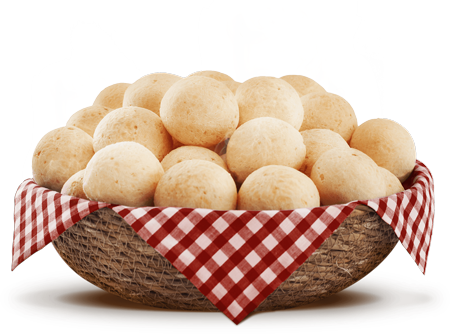Recipes
The History of Traditional Brazilian Cheese Bread
The History of Traditional Brazilian Cheese Bread
The origin of cheese bread, or “pão de queijo” as it’s known in Brazil, is a tale steeped in history, tradition, and culinary evolution. While the exact beginnings of this beloved snack remain a topic of debate, there are some widely accepted theories and stories that trace its roots.
The Indigenous Influence: Before the Portuguese colonized Brazil in the 16th century, indigenous tribes were already cultivating and consuming cassava, a root vegetable native to South America. They would peel, soak, and grind the cassava to remove its natural toxins, resulting in a starchy residue. This residue was then shaped into cakes and baked, creating a precursor to the modern cheese bread, albeit without the cheese.
Colonial Times and the Introduction of Cheese: When the Portuguese settlers arrived, they brought with them their dairy farming practices. In the state of Minas Gerais, a region with a rich history of dairy production, the settlers began producing cheeses. Over time, as the story goes, leftover whey from cheese production – which contained a small amount of cheese – was mixed with the cassava flour to produce a new kind of bread. This combination of cassava flour and cheese laid the foundation for what would become the traditional Brazilian cheese bread.
The Evolution of Pão de Queijo: As dairy farming in Minas Gerais expanded, so did the production of cheese bread. By the 18th century, pão de queijo had become a staple in the region. The recipe was passed down through generations, with each family adding its unique touch. Some added different types of cheeses, while others experimented with the consistency of the dough.
Modern-Day Popularity: Today, pão de queijo is not just limited to Minas Gerais or even Brazil. Its popularity has spread worldwide, with many people enjoying its unique texture and flavor. From cafes in São Paulo to supermarkets in Tokyo and bakeries in New York, this Brazilian delicacy has found fans across the globe.
Cultural Significance: Beyond its delicious taste, pão de queijo holds cultural significance for Brazilians. It’s a symbol of hospitality and warmth. Serving cheese bread to guests, whether at home or in gatherings, is a gesture of welcome. Its presence is almost mandatory in festive occasions and family reunions.
In conclusion, while the exact origin of the traditional Brazilian cheese bread might be uncertain, its journey from the indigenous tribes of Brazil to the global stage is a testament to its timeless appeal. Rooted in the rich history of Minas Gerais and influenced by various cultures over centuries, pão de queijo stands as a delicious symbol of Brazil’s culinary heritage.





